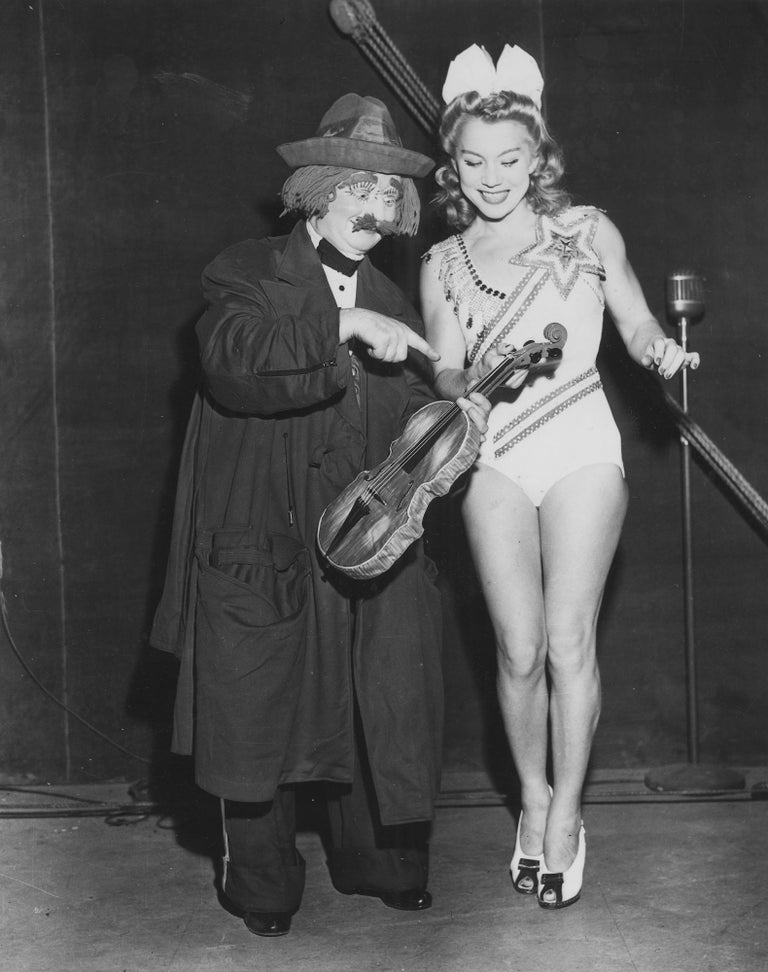
Clown Act
c 1950. Gelatin silver print, 9 1/2 x 7 1/2 in. (241 x 190 mm) from the Roland Butler Collection, Press Agent, Ringling Bros. and Barnum & Bailey Circus (1930s-1960s) Roland Butler Collection hand stamp on verso.
"In the United States meanwhile emerged another type of clown, not exclusive to the US but popularised with the rise of early silent movies. This was the character clown, the most popular of these being the Hobo or Tramp clown although character clowns can be police officers, women, or babies – any character at all.
In the great depression of the 1930’s, unemployment and homeless people recorded an all time high. From this, the Tramp Clown appeared. Charlie Chaplin was probably the first and best remembered. He travelled from England to America at the turn of the century, just in time to take advantage of the new medium of film. The invention of the cinema in the 1890’s gave clowns greater scope than they could have previously imagined. Skills learned in the circus, the music halls and their American equivalent, vaudeville, were adapted to the screen. The Hobo usually has tattered clothes, a tattered hat, make-up which suggests he is unshaven, exaggerated features and a red nose. The generic Tramp character is ‘down-on-his-luck’. Charlie Chaplin as the silent ‘Little Tramp’ clown, brought laughter to millions worldwide through film. The Hobo may look similar, but knows that everything will turn out all right so is not unhappy about his situation." [iClown The Talk of the Clown A resource and a series of articles on clown and clowning].
Condition: Very good +.
Item number: 258
Price: $200.00
Share: